To access our project’s dedicated Outreach page and learn more about exoplanet research in a generally accessible way, please visit: https://outreach.spp1992-exoplanetdiversity.de/
Um die Outreach-Seite des Forschungsverbunds zu besuchen, und viel mehr über Exoplanetenforschung zu lernen, aufbereitet in allgemeinverständlicher Form, besuchen Sie https://outreach.spp1992-exoplanetdiversity.de/de
Below, you’ll find some legacy content that is no longer maintained.
Contents
- Definition exoplanet and different types
- Exoplanet systems
- Historical context
- Habitability
- Detection methods
- Observation techniques
- Meet the scientists
What is an exoplanet?
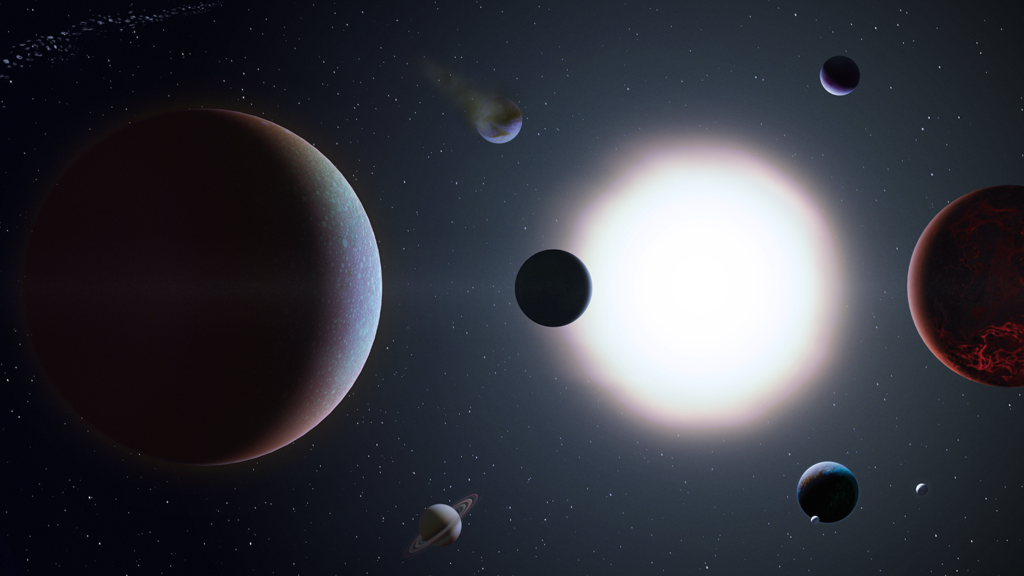
Well, to put it simply, an exoplanet, short for “extrasolar planet”, is a planet that does not orbit our Sun. The vast majority of exoplanets known to us orbit other stars, but a few starless, so called “rogue” , planets have been found.
Exoplanet diversity – different types

Earth-sized
Super-Earth
Neptune-sized
Jupiter-sized
Exoplanet systems
The planets of our Solar System are ordered a certain way: closest to the sun are the smaller, terrestrial planets Mercury, Venus, Earth and Mars, then we have the massive gas giants Jupiter and Saturn, and furthest away from the Sun we have the intermediate-sized ice giants Uranus and Neptune. Additionally, most planets’ orbits are almost circular (so-called “low eccentricity”), and their orbital planes are more or less the same so that the solar system seems to be arranged in a large disk (so-called “low-inclination”).
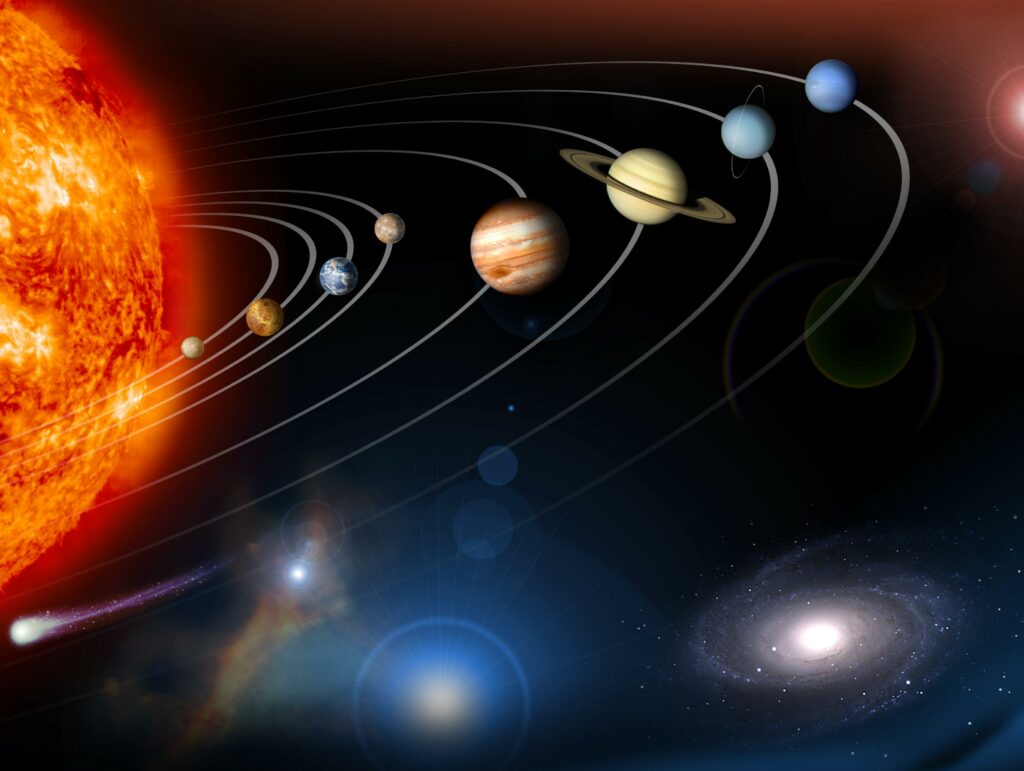
However, since we began exploring other planets, we found a lot of deviations for what we thought the norm was (based on our Solar System). There are a lot of systems with Jupiter-sized or bigger planets incredibly close to their stars, like 51 Pegasi b, or systems where rocky planets and gas giants are not separated but mixed. There are planets whose orbit, rather than being circular, form an extremely elongated ellipse, such as HD 20782 b. There are also systems, where the planets’ orbital planes do not form a disc as in our Solar System, but where the orbits are significantly inclined to each other, as is the case with HD 39091.
To understand this vast diversity of planetary systems is one of the most important goals of this research priority program.
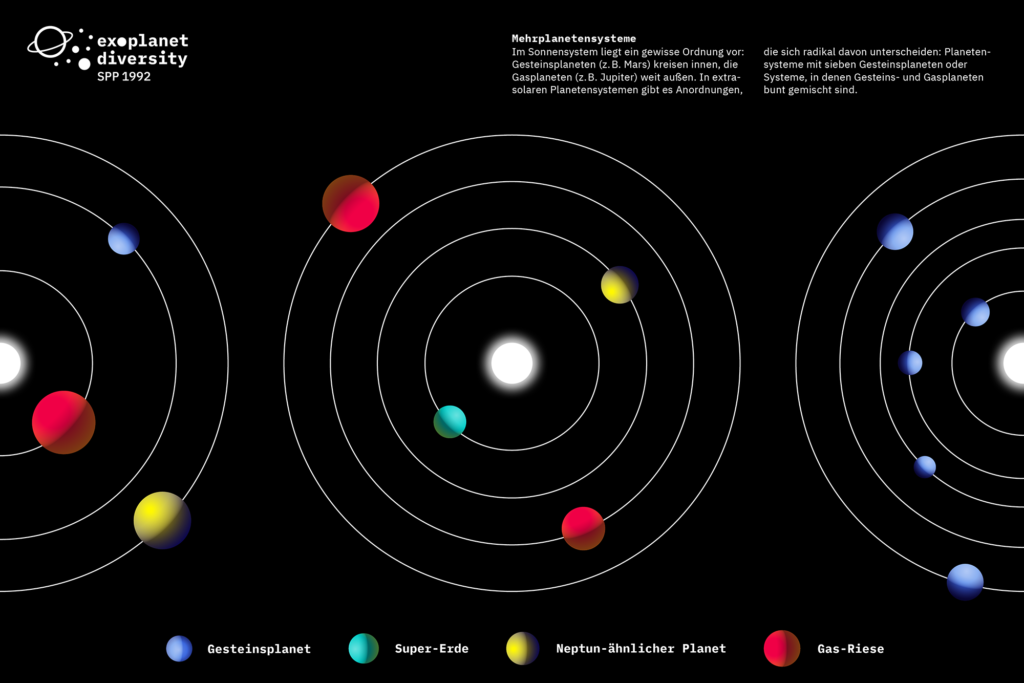
Multiple systems
Of the about 5000 known exoplanets discovered as of July 2022, about 2000 are part of planetary systems with more than one confirmed planet around the same star. Most of those are two-planet systems (about 500).
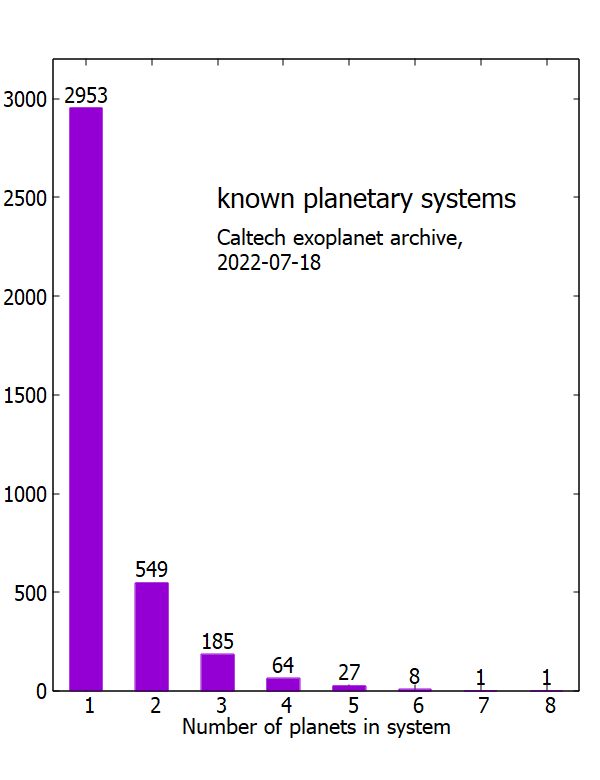
However, there is one system with seven known exoplanets: TRAPPIST-1. Its planets, discovered in 2016 and 2017, range between 0.3 and 1.4 times the mass of Earth, which means they are all rocky planets. All of them complete their orbit in less than 20 days and have an orbital radius less than one fifth of that of Mercury, the innermost planet of our Solar System. But because TRAPPIST-1 is an M-dwarf star, and as such is quite a bit less hot than our Sun, three of its planets lie in the star’s habitable zone, i.e. the range around the star where the existence of liquid water on the surface might be possible.
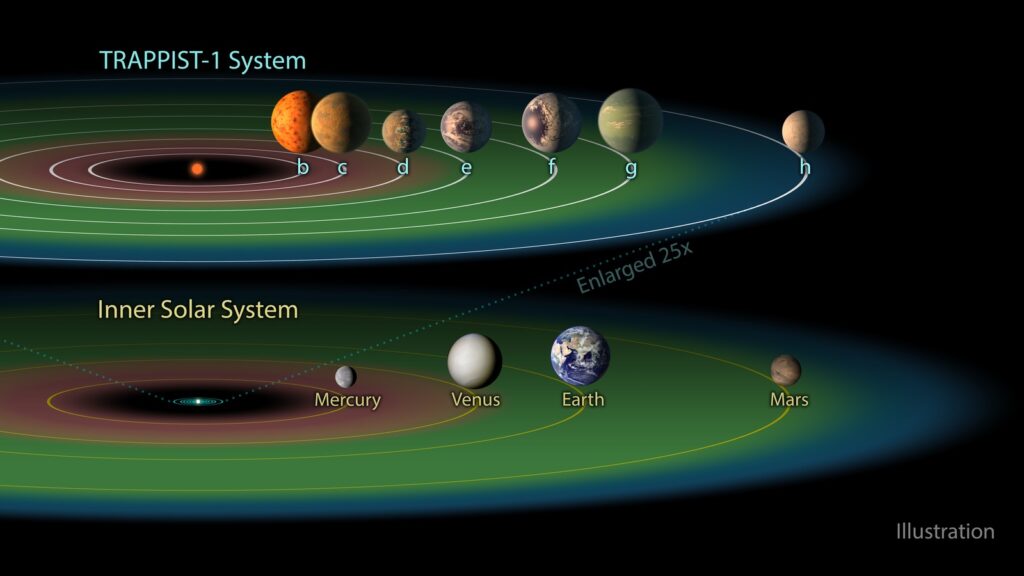
The planets of the TRAPPIST-1 system are very close to orbital resonances with their respective neighbours, meaning in the time it takes one planet to complete a whole number of orbits, their closest neighbour also completes a whole number of orbits. See an animation of this behaviour here.
Historical context
The first confirmed extrasolar planets were found in 1992 by Aleksander Wolszczan and Dale Frail, who discovered two planets around the pulsar PSR B1257+12, later named Phoebetor and Poltergeist.
Then, in 1995, the first exoplanet around a Sun-like star followed, found by Didier Queloz and Michel Mayor around 51 Pegasi. This planet, about half as massive as Jupiter but on an orbit roughly one seventh the size of Mercury, was later named Dimidium. It kicked off an age of exoplanet discoveries that is going to this day.

In the following years, milestones kept coming. In 2001, the first planet in the habitable zone was discovered – HD28185b, although it was a planet about six times the mass of Jupiter. The same year saw the first measurement of an exoplanet’s atmosphere composition (HD 209458b).
Dedicated telescopes for searching for extrasolar planets went into service, such as CoRoT (2006-2013), Kepler (2009-2018) or TESS (since 2018). At present, as of August 2022, there are over 5000 confirmed extrasolar planets.
For a vastly more detailed timeline of exoplanet research, click here.
Malcolm Fridlund talks about “Exoplanets from an historical perspective” in the SPP 1992 Webinar.
Habitability
The habitable zone is the band around a star, where a planet can hold liquid water on its surface. This depends on the energy output of the star, e.g. a relatively “cool” star like an M-Dwarf has its habitable zone much closer to it, than a hotter star like our sun.
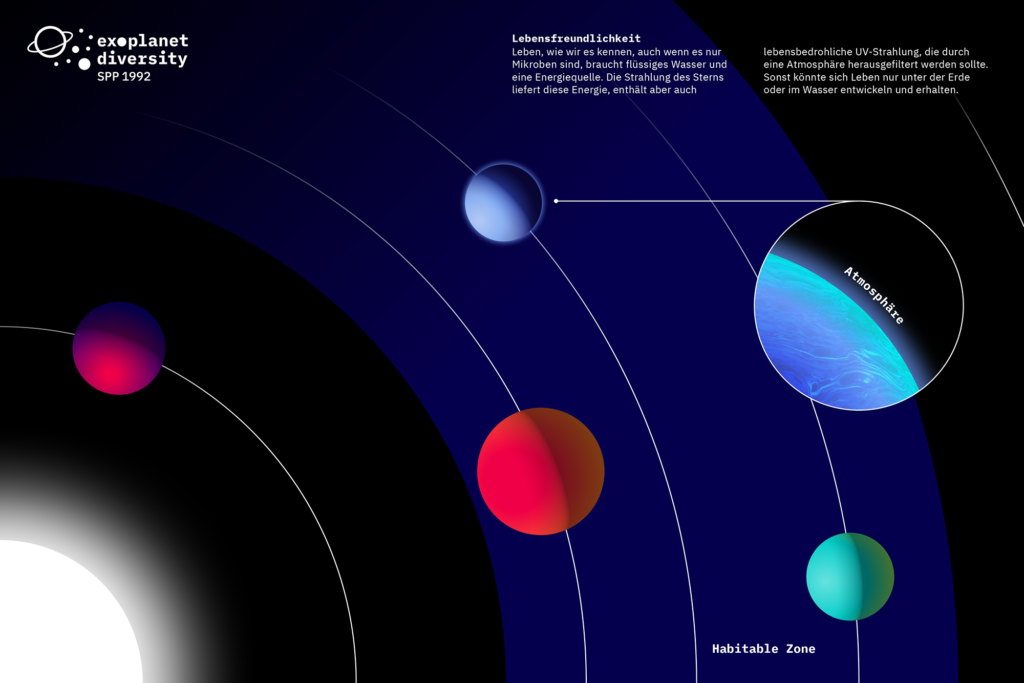
The habitable zone can only ever be an estimate, because it relies on atmosphere processes like the greenhouse effect, and we do not have detailed measurements of most exoplanets’ atmospheres. Also it only gives the zone where a planet with a suitable atmosphere could have liquid water, it cannot tell you if a given planet actually has water, much less life as we would know it.
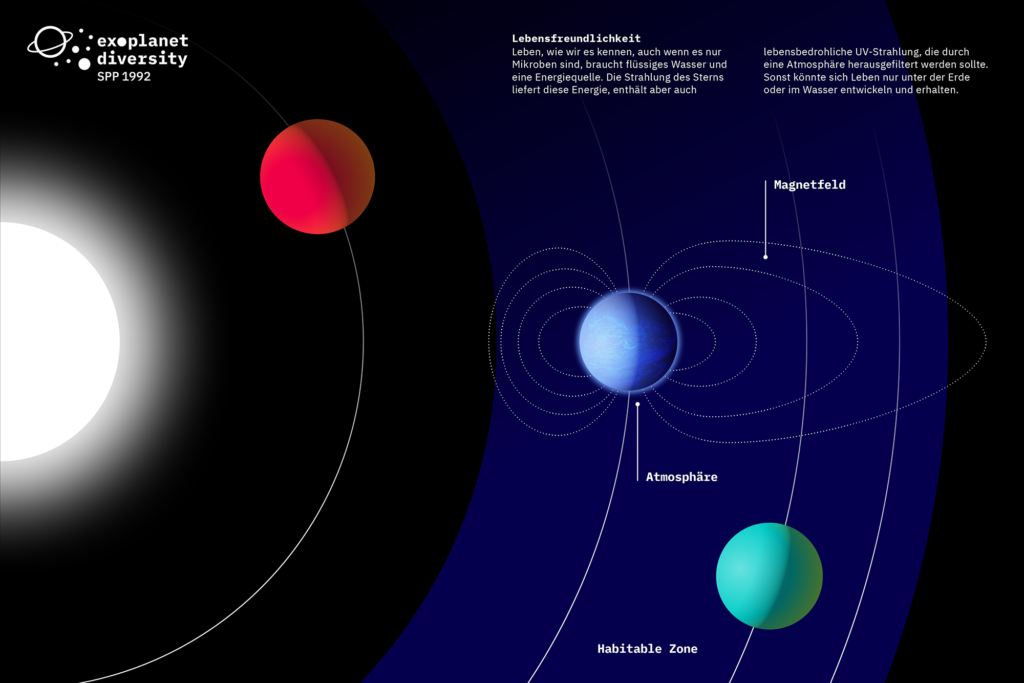
Detection methods
The most common methods for finding exoplanets are transit and radial velocity. Of the several other methods that exist, we have described a few particularly interesting ones.

Radial velocity
Transit method
Gravitational lensing
Direct Imaging
Astrometry
Meet the scientists
Are you interested in how scientists discovered their passion for astronomy? And what career path they have to research the exciting topic around exoplanets today? We would like to introduce you to a few of our young scientists, how they got into astronomy and what they are currently investigating.
